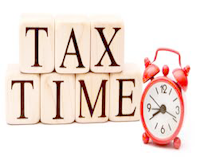Budget 2017 has proposed to change the tax rates for the previous year 2017-2018 i.e. assessment year 2018-2019 by keeping income tax slabs unchanged.
Existing rebate available under section 87A is also proposed to be reduced from existing Rs. 5000 to Rs. 2500.
In India, tax is calculated according to the income tax slab rates for different age groups announced by the government every year in the Budget.
Let us discuss, these tax slab rates as proposed in budget 2017 applicable to an individual for the previous year 2017-2018 i.e. Assessment year 2018-2019.

Latest tax slab rates for previous year 2017-2018 (AY 2018-19)
| Taxable Income Tax Slab (Amount in INR) | Individual (Aged Below 60 years) | Senior Citizen (Aged 60 years or above but below 80 years) | Super Senior Citizen (Aged 80 years or above) |
| Up to 2,50,000 | NIL | NIL | NIL |
| 2,50,001 to 3,00,000 | 5% | NIL | NIL |
| 3,00,001 to 5,00,000 | 5% | 5% | NIL |
| 5,00,000 to 10,00,000 | 20% | 20% | 20% |
| 10,00,001 and above | 30% | 30% | 30% |
Tax Slab rates for a Resident Individual below the age of 60 Years
| Taxable Income Tax Slab
(Amount in INR) |
Income tax rates | Education Cess (calculated on Income Tax) |
Secondary and Higher Education Cess (calculated on Income Tax) |
| Up to 2,50,000 | NIL | NIL | NIL |
| 2,50,001 to 5,00,000 | 5% of (Total Income-Rs. 250000) | 2% | 1% |
| 5,00,001 to 10,00,000 | Rs.12,500 + 20% of (Total Income-Rs.5,00,000 | 2% | 1% |
| Above 10,00,000 | Rs. 1,12,500 + 30% of (Total Income-10,00,000) | 2% | 1% |
| Surcharge at the rate of 10% will be charged for taxable income between Rs. 50 lakhs to Rs. 1 Crore. If taxable income is more than 1 Crore then surcharge will be charges @ 15%. | |||
Tax Slab rates for a Resident Individual Aged 60 Years or more but below 80 years
| Taxable Income Tax Slab
(Amount in INR) |
Income tax rates | Education Cess (calculated on Income Tax) | Secondary and Higher Education Cess (calculated on Income Tax) |
| Up to 3,00,000 | NIL | NIL | NIL |
| 3,00,001 to 5,00,000 | 5% of (Total Income-Rs. 3,00,000) | 2% | 1% |
| 5,00,001 to 10,00,000 | Rs.10,000 + 20% of (Total Income-Rs.5,00,000 | 2% | 1% |
| Above 10,00,000 | Rs. 1,10,000 + 30% of (Total Income-10,00,000) | 2% | 1% |
| Surcharge at the rate of 10% will be charged for taxable income between Rs. 50 lakhs to Rs. 1 Crore. If taxable income is more than 1 Crore then surcharge will be charges @ 15%. | |||
Tax Slab rates for a resident individual aged 80 years and above
| Taxable Income Tax Slab
(Amount in INR) |
Income tax rates | Education Cess (calculated on Income Tax) | Secondary and Higher Education Cess (calculated on Income Tax) |
| Up to 5,00,000 | NIL | NIL | NIL |
| 5,00,001 to 10,00,000 | 20% of (Total Income-Rs.5,00,000 | 2% | 1% |
| Above 10,00,000 | Rs. 1,00,000 + 30% of (Total Income-10,00,000) | 2% | 1% |
| Surcharge at the rate of 10% will be charged for taxable income between Rs. 50 lakhs to Rs. 1 Crore. If taxable income is more than 1 Crore then surcharge will be charges @ 15%. | |||
Surcharge and Cess
Along with income tax, you are also required to add surcharge if applicable. 10% surcharge on income tax as calculated above is required to be added if the total income exceeds Rs. 50 lakhs but below Rs. 1 Crore. Instead of 10%, 15% will be charged if total income exceeds Rs. 1 Crore.
In addition to income tax and surcharge, 3% will be levied as Cess. Out of 3%, 2% has to be calculated on income tax and surcharge towards education cess and 1% on income tax and surcharge towards secondary and higher education cess.
Rebate Under Section 87A
A resident Individual whose total income does not exceed Rs. 3, 50,000 is entitled to claim Rs. 2500 or 100% of income tax payable whichever is less as rebate under section 87A for the year 2017-2018. It is deductible before calculating the cess.
For the year 2016-2017, rebate under section 87A is only Rs. 5000 if income is up to Rs. 5, 00,000.
To calculate tax, you need to understand the difference between gross total income and taxable income.
Gross Total Income
Gross Total Income means total income under the head salaries, house property, business and profession, capital gain or income from other sources before allowing deduction under section 80C to 80U.
Taxable or Total Income
Taxable/Total Income is calculated by deducting deduction allowed under section 80C to 80U from the gross total income. If you are eligible for any of these deductions allowed under section 80C to 80U then your taxable income will always be less than the gross total income. Tax is calculated on Total Income.
If you invest in tax saving scheme eligible to get deduction under section 80C, you will pay less tax and take the benefit of a lower tax slab rate as amount invested will get deducted from your income before calculating tax. For example, if your income is Rs 6, 00,000 and you have invested Rs. 1, 50,000 in any or all of these tax saving schemes, your total income will be Rs. 4, 50,000 instead of Rs. 6, 00,000. Due to this you avoid the 20% slab bracket and end up saving tax.